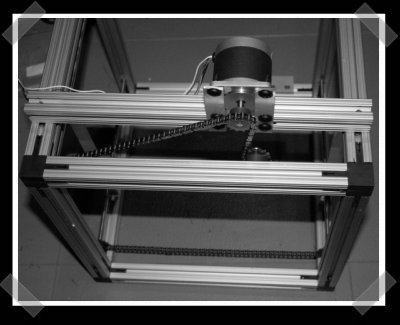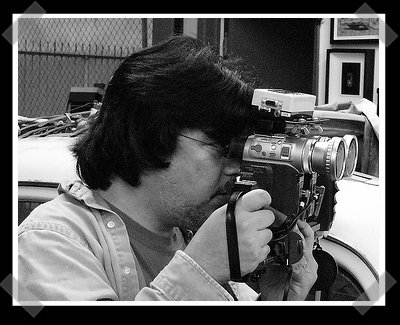
[Lou]’s been working on his own 3d printer: fabr. We find it appealing because the entry cost is quit a bit lower than something like the reprap. 80/20 isn’t that cheap, but you don’t need a large commercial laser cutter to build the chassis. The steppers he used appear to be inexpensive ones that can be salvaged from dot matrix printer. To drive it, he’s working on a custom microstepping board and hopes to eventually develop an Arduino shield to control the stepper drivers. That’s right, it’ll get an Arudino to act as the CNC control interface.
3d151 Articles
3D Glasses For An SGI

[Mark Hoekstra] is a true SGI enthusiast, and he proves it with these 3D glasses for an SGI. Taking advantage of the SGI’s stereo viewport, [Hoekstra] created a controller for a pair of CrystalEyes glasses that would allow them to be used with the SGI.
[Hoekstra] used the schematic from [M.C.D. Roos]’s similar project, which used old Asus 3D VR glasses. This project can theoretically be done with any LCD-shutter glasses, the only important thing to know is the maximum shutter voltage the glasses will take. [Hoekstra] felt his way through building the board by common sense alone and somehow managed to avoid any shorts. The board only makes three connections to the glasses: an out to the left lens, one to the right, and a ground wire. After building the controller board out of an LM324 chip and a customized segment of perf board, he learned that he needed a monitor capable of displaying a relatively high bit depth at 100Hz, or 50Hz per eye. He tested the glasses with a game called Hacknoid after making a few last minute changes on the board (forgot the ground fuse), and he was soon making himself dizzy with his functioning 3D glasses.
Alternative 3D Controllers

There are several very nice 3D mice out there for navigating services like Google Earth or Second Life. 3Dconnexion for example makes a whole line of devices for 3D navigation. Their compact units offer 6-8 degrees of freedom with several customizable options. The company has an SDK available and many of their devices are natively compatible with Linux (or available for access through an XInput driver). So while that is all well and great, lets look at some alternative ways people are navigating 3D spaces.
3D Video With Consumer Cameras

While perusing our photos from the Hooptyrides, Inc. tour you may have noticed [Eric Kurland]’s two handed stereoscopy rig. It’s constructed from two consumer grade Sony DV cameras. The problem with using two separate cameras to make stereo images or video is that a lack of clock sync will make objects appear out of their true position because of differences in framerate. To solve this problem Damir Vran?i? developed the 3D LANC Master. It reads the crystal frequency from one of the cameras and writes to the ram of the other camera using Sony’s LANC protocol. This constant monitoring keeps the clocks within +/- 3ms. The control box also has buttons to power on, zoom, and record in sync. The 3D LANC Master plans are completely open source and work with a large number of Sony cameras. We have more photos of Eric’s rig after the break.










